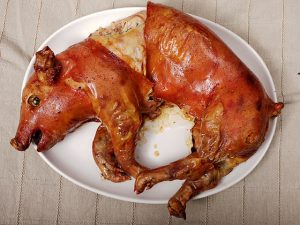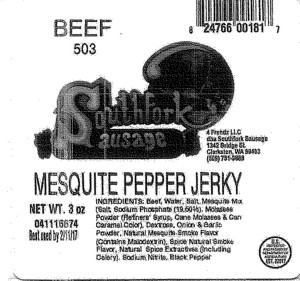National Steak and Poultry, an Owasso, Okla., establishment, is recalling approximately 1,976,089 pounds of ready-to-eat chicken products due to adulteration because of possible undercooking, resulting in the potential survival of bacterial pathogens in the products, the U.S. Department of Agriculture’s Food Safety and Inspection Service (FSIS) announced today.
 The scope of this recall expansion now includes a variety of ready-to-eat chicken products that were produced on various dates from August 20, 2016 through November 30, 2016.
The scope of this recall expansion now includes a variety of ready-to-eat chicken products that were produced on various dates from August 20, 2016 through November 30, 2016.
The cases containing the products subject to recall bear establishment number “P-6010T” inside the USDA mark of inspection. These items were shipped to food service locations nationwide and were sold directly to retail consumers at the establishments’ monthly dock sale.
The basis for recalling additional product was discovered on Nov. 28, 2016, when a food service customer complained to the establishment that product appeared to be undercooked.
Below are the details of the originally recalled product:
– On November 23, 2016 – National Steak and Poultry recalled approximately 17,439 pounds of ready-to-eat chicken products produced Oct. 4, 2016. The products were packaged on Oct. 4 and Oct. 5, 2016. The following products are subject to recall:
– 5 lb. bags packed 2 bags per case; product labeled “Distributed by National Steak and Poultry, Owasso, OK Fully Cooked, Diced, Grilled Boneless Chicken Breast Meat with Rib Meat” with Lot code 100416, and Case Code: 70020.
– 5 lb. bags packed 2 bags per case; product labeled “Hormel Natural Choice 100% Natural No Preservatives Fully Cooked Roasted Chicken Breast Strips with Rib Meat Natural Smoke Flavor Added” with Lot code 100416, and Case code 702113.
– The cases containing the products subject to recall bear establishment number “P-6010T” inside the USDA mark of inspection. These items were shipped to food service locations nationwide and should not be in consumers’ possession. No other Hormel product is impacted. The original problem was discovered on Nov. 14, 2016, when a food service customer complained to the establishment that product appeared to be undercooked.
There have been no confirmed reports of adverse health effects or illnesses due to consumption of any of the recalled products. Anyone concerned about a health effect should contact a healthcare provider.





 strain isolated in the suspected food was performed as well as a traceability investigation.
strain isolated in the suspected food was performed as well as a traceability investigation..jpg) Medium-rare hamburger is not the same as a medium-rare steak.
Medium-rare hamburger is not the same as a medium-rare steak..jpg)
.jpg)
.jpg) had non-bloody diarrhea for 3 days and abdominal pain. Questioning of the patients’ parents identified no recent history of travel, contact with farm animals, or outdoor bathing. A food history indicated that the 2 patients had shared an undercooked ground beef burger 4–5 days before symptom onset. The patients’ parents also ate burgers from the same package (box); they did not report any gastrointestinal symptoms.
had non-bloody diarrhea for 3 days and abdominal pain. Questioning of the patients’ parents identified no recent history of travel, contact with farm animals, or outdoor bathing. A food history indicated that the 2 patients had shared an undercooked ground beef burger 4–5 days before symptom onset. The patients’ parents also ate burgers from the same package (box); they did not report any gastrointestinal symptoms.